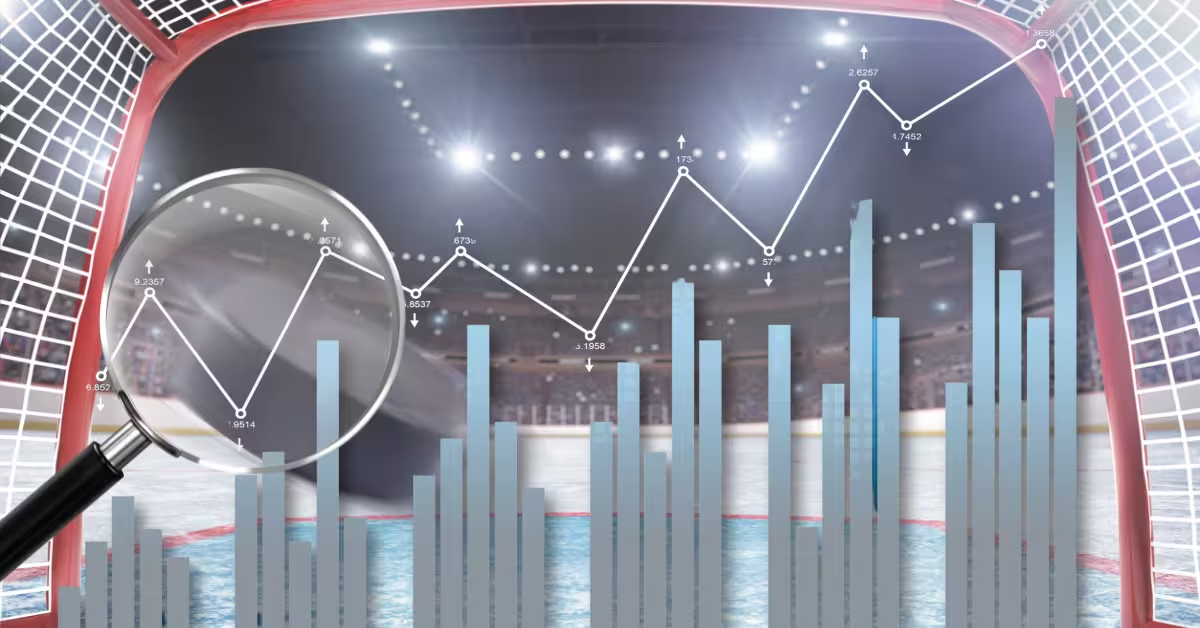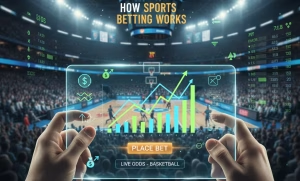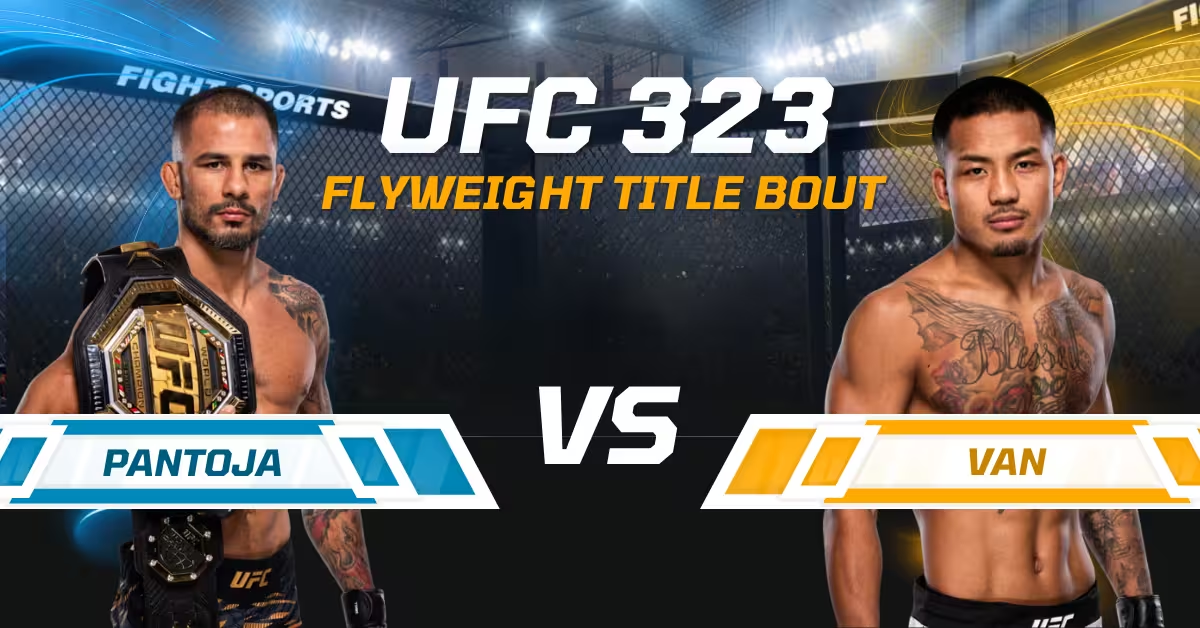NHL Expected Goals (xG) Analytics: Turning Hockey Stats into Betting Edges

We don’t have to rely on our gut instincts alone anymore, nor should we! We need all of the advantages we can get in life, and nowhere as much as in sports betting.
Instead of the most basic stats and our feelings, we now have the luxury of advanced analytics; we’re specifically talking about expected goals in this category.
Known as xG, expected goals are literally changing the game for hockey bettors! Just like sabermetrics revolutionized baseball, hockey analytics are giving us new and improved predictive tools that go so far past mere wins and losses.
But to understand xG metrics, you need to know what they are and how they work in order to use them to your advantage.
That’s where we come in: we are gonna tell you all about xG, how it works for NHL betting, how to interpret xG reports, and how to apply it to all kinds of bet types so that you can exploit it and outsmart the oddsmakers.
What is Expected Goals (xG) in Hockey?
Expected Goals (xG) is a statistic that measures the quality of scoring chances in hockey. Unlike simple shot counts, xG evaluates how likely each shot is to result in a goal, and it’s based on where and how it was taken. It translates shot opportunities into a probability of scoring, and that gives us a more nuanced gauge of offensive performance than just counting shots on goal.
The official definition is this: Expected goals assign a value (between 0 and 1) to every shot, representing the probability that the shot will become a goal.
A harmless point shot might be worth only 0.02 xG (2% chance), and a point-blank one-timer in the slot could be 0.3 xG (30% chance). The values are derived from historical data of thousands of shots and outcomes. xG quantifies shot quality: a team that generates 3.0 expected goals in a game has produced chances that should yield about 3 goals on average, even if they actually score more or fewer goals.
How It’s Calculated
How do you calculate it? Modern xG models look at a variety of factors for each shot, like the following:
- Shot location (distance & angle): Closer, more centered shots have higher xG values. A shot from the slot or crease is way more dangerous than one from a sharp angle or the blue line.
- Shot type: The method of the shot matters; a one-timer or deflection can carry higher xG than a routine wrist shot, because quick passes or tips catch goalies out of position.
- Rebounds and rushes: Shots following rebounds or odd-man rushes get a boost in xG. A rebound attempt on an open net or a fast-break chance usually has a higher scoring probability.
- Traffic and situation: Screens and power plays can increase a shot’s chance of going in. If the goalie’s view is obscured (traffic in front) or the attacking team has a man-advantage, the xG for a given shot might be higher; some advanced models now factor in goalie positioning and defensive pressure.
The variables above produce an expected goal value for each attempt. Summing them up gives expected goals for (xGF) and against (xGA) for teams or players. If Team A takes mostly perimeter shots totaling 1.8 xGF, and Team B creates fewer chances but from prime areas totaling 2.5 xGF, Team B actually had the better offensive game despite being outshot.
Let’s look at an example: If Team X fires 35 shots from all over, and Team Y manages only 25 shots, but most are from the slot on odd-man rushes?
Team X might have ~2.0 xGF (lots of low-quality attempts) compared to Team Y’s ~3.0 xGF (fewer but high-quality chances). In this case, Team Y was more likely to win despite being outshot, which is a distinction that only metrics like xG can tell us.
The Calgary Flames were ranked top-3 in the NHL in shots but were 18th in goals, because so many of their shots were low-danger perimeter attempts. This tells us how xG differentiates between the quantity and quality of shots.
Here are the main terms that you’ll usually see in a few related metrics alongside xG:
- xG (Expected Goals): The total expected goals for a team or player. (E.g., “3.2 xG” means the team created chances worth 3.2 expected goals.)
- xGA (Expected Goals Against): The total expected goals allowed by a team; basically, the quality of chances they gave up to the opponent.
- xGF% (Expected Goals For Percentage): The share of total expected goals in a game or season that a team earned. It’s calculated as xGF / (xGF + xGA). An xGF% above 50% means a team is driving play and creating more quality chances than it allows.
Why xG Matters for NHL Bettors
Information is always kind, and that applies to sports betting! xG gives us predictive insight that traditional stats usually miss. In hockey’s small sample theater (with few goals and a lot of randomness), xG acts as a compass pointing to a team’s real form. How can expected goals predict future performance and help bettors spot teams due for a hot streak or a cold slump? Like this:
Predictive Power
Teams with really strong xG numbers tend to thrive in the long run, even if short-term results fluctuate. Because xG measures sustainable aspects of play (like consistently creating chances), it is more repeatable and reliable than stats like shooting percentage that are prone to luck alone. Expected goals have been shown to predict future performance better than simple shot totals or current goal totals.

A team that’s sitting at only 4-6 in the standings but carrying a 56% xGF% (controlling play overwhelmingly) is a prime candidate to improve. Usually, these teams are losing due to bad bounces, good opposing goalies, or other short-term variance; it’s not because they’re playing badly. As the season goes on, those factors will even out. Bettors who use xG can identify the “underperforming” teams and anticipate a turnaround before the rest of the market catches on.
Now, a team that has a gaudy win-loss record that’s fueled by unsustainably high shooting and save percentages (but a sub-50% xGF%) might be living on borrowed time. In analytics parlance, they’re a regression candidate. In the long term, a club cannot keep getting out-chanced badly but winning games; eventually, the puck luck will run out. When you track expected goals, you can pinpoint the teams that are overperforming (due for a downturn) or underperforming (due for a lift) relative to their true ability.
Application in Betting
What is the practical value of this predictive power? That’s how you locate value bets!
- Identifying Undervalued Teams: If Team A has lost a slew of close games but sports a strong xGF% and a positive expected goal differential, it’s likely better than its record. Sportsbooks could continue to price them as underdogs or give longer odds based on their poor record. A bettor using xG can get in on those generous odds, expecting Team A to “regress to the mean” in a positive way (i.e., start winning more as their luck evens out). The same logic applies to betting individual games; you might back a team that’s lost three straight if the xG data shows they’ve carried play in those games.
- Spotting Overvalued Teams: You can also fade teams that are riding unsustainable percentages. If Team B is 8-2 but continually getting out-chanced (say, 48% xGF%), an elite goalie or high shooting percentage is masking their mediocre play. Bettors who are aware of this can profit by betting against Team B before the market fully adjusts. When Team B hits a cold streak or the puck luck goes bye-bye, those bets pay off.
How to Interpret xG Reports and Metrics
Once you understand the basics of xG, the next step? That’s to apply it to real-world data. There are so many resources that provide team and player xG stats, but what are the most important numbers? Next up, we’ll go over where to find xG data and how to read the key metrics to inform your bets!
Where to Find Data
Fortunately for bettors, advanced stats are all over the place! The most popular free resources include Natural Stat Trick, MoneyPuck, Evolving-Hockey, and HockeyViz.
The sites track team and player xG, and it’s usually broken down by situation (even-strength, power play, etc.). Natural Stat Trick has both raw totals and per-60-minute rates for xGF and xGA, and allows filtering for the last 10 or 20 games to see recent trends.
MoneyPuck has interactive graphs and “deserve-to-win” charts that are based on xG. Evolving-Hockey (there’s a subscription for some features) gives advanced metrics and predictive models. The mainstream adoption is wide; sites like The Athletic and The Hockey News publish analytics-based insights that leverage the sources.
Important Metrics to Track
Not all numbers on an analytics report are as useful as others. Below are the high-impact metrics and how to use them:
This is arguably the bellwether stat for team performance. It measures what share of the overall expected goals in a game belongs to the team. An xGF% above 50% means a team typically has the better of the chances. Over a season, ranking highly in xGF% correlates strongly with success; the Carolina Hurricanes had a 5-on-5 xGF% around 56% (top 3 in the NHL), which reflected their territorial dominance. Teams above ~52-53% are elite; teams well below 50% are usually near the bottom of the standings. Bettors can use xGF% as a quick “control of play” indicator. If a matchup features a 55% xGF team against a 45% xGF team, you’ve identified a clear favorite (even if the weaker side has a similar win-loss record via luck).
The rate stats tell you how many expected goals a team generates or allows per 60 minutes at even strength. Look at them like offensive and defensive efficiency; if a team has an xGF/60 of 2.8, they create 2.8 expected goals worth of chances each full game; that’s a strong offense. xGA/60 might show that the same team only allows 2.2 expected goals per game, a stout defense.
Together, they give you a good idea of a team’s style: a high xGF/60 with a middling xGA/60 indicates a run-and-gun team (great offense, average defense), whereas low xGA/60 and low xGF/60 point to a defense-first, low-event team. As a bettor, the metrics help project game flow.
While this is not an xG metric itself, PDO is super important for contextualizing xG data! PDO measures luck (a combo of a team’s shooting percentage and save percentage, usually around 1.000 in the long run).
When a team’s actual results diverge from their xG, PDO is usually why. A team might have ~50% xGF (average chance generation) but an inflated PDO of 1.030 due to a hot goalie and unusually high scoring efficiency, yielding far better results than xG alone predicts. Tracking PDO alongside xG can flag these cases of over- or underperformance. As a bettor, pay attention when a team’s PDO is abnormally high or low; it will regress over time, and xG will indicate what results to expect when it does.
To visualize how these metrics manifest, take a look at the snapshot from last season:
- Carolina Hurricanes
- xGF%: 56.3%
- Record: 26-15-5 (mid-season)
- Notes: Dominating play (top-3 xG share) but suffering from poor puck luck. The Canes had the NHL’s worst 5v5 save percentage (~89.8%), which contributed to a low PDO (~0.978) despite an elite xGF%. They are expected to improve as goaltending normalizes.
- Carolina Hurricanes
- xGF%: ~50%
- Record: 29-10-4 (mid-season)
- Notes: An excellent record that’s buoyed by a sky-high PDO (1.031). The Jets were only mid-pack in xG (8th in xGF%), but Vezina-caliber goaltending (from Connor Hellebuyck) and above-average shooting had them outperforming their xG by +10%. A regression candidate if those percentages fall.
In the above example, Carolina’s strong xGF% signaled a contender whose results could uptick (indeed, they surged later in the season), whereas Winnipeg’s mediocre xG metrics warned that their winning pace might slow down, which is exactly what “expected” goals warned us about. As a bettor, reading an xG report in this way helps cut through misleading win-loss records and identify the real quality of teams.
Applying xG Analytics to Different Betting Markets
How can we translate xG insights into actual wagers? Next up, we break down applications across common NHL bet types, from picking moneyline winners to over/unders, player props, and futures. Every market can benefit from a slightly different angle of xG analysis!
Moneyline Bets
When you’re betting on a team to win (moneyline), xG can be a deciding factor in evaluating matchups. The goal is to spot games where the underrated team has quietly outplayed opponents in recent games despite poor results. If the Chicago Blackhawks have lost five of their last seven games, on the surface, they appear to be a fading team. But if during that stretch their 5-on-5 xGF% was, say, 54% (meaning they carried play but perhaps ran into hot goalies), that’s a signal their form is better than the losses indicate. A bettor might back Chicago as an underdog in the next game, expecting a “correction” as those good performances translate to wins. Always combine it with other contexts (injuries, scheduling), but xG is usually the best tiebreaker in finding value sides.
Totals (Over/Under)
Expected goals in totals help to identify the real offensive and defensive tendencies of teams, and their past goals-per-game averages.
An NHL total, which is usually set around 5.5 or 6.5, can change based on if a matchup is likely to be a wide-open chance-fest or a tight defensive battle. To forecast that, look at each team’s xGF/60 and xGA/60 (expected goals for and against per game) and recent trends.
- If both teams are in the top tier of creating chances and both allow a lot of chances against (high-event hockey), the over is an attractive option. If Team A averages 3.2 xGF/60 (great offense) but also 2.8 xGA/60 (leaky defense), but Team B sits at 3.0 xGF/60 and 2.9 xGA/60, they’re trading chances. Unless the goaltenders are elite, a 6.5 Over bet could be smart, as the game projects to have lots of quality looks for both teams.

- If two teams play stingy hockey, and Team C generates only around 2.2 xGF/60 but boasts just 2.0 xGA/60 (very tight defensively), and they’re up against a similar low-event opponent? That suggests a grind-it-out game. If both starting goalies are solid, the Under (e.g., Under 5.5) is in play, because neither side is likely to generate a lot of dangerous opportunities.
xG can also flag mismatches in style: e.g., a team with a high xGF going against one with a low xGA. In those cases, consider the context. A great offense vs a great defense might cancel out (lean under if the defense and goaltending dictate pace). But if a poor defensive team has a lot of injuries, it could allow a middling offense to outperform its usual xGF, which will push the total higher.
Use expected goal metrics to estimate how many quality chances will likely be traded. It’s more precise than using just goals-for or shots-for, which might mislead (a team could be scoring on few chances or taking many low-quality shots). By aligning your total bets with xG trends (and checking if either team has a hot/cold goalie that’s inflating or deflating recent scores), you can nudge the odds in your favor!
Player Props
Advanced stats aren’t just for teams; individual expected goals (ixG) can be a treasure chest for player prop bets.
The most common prop market is Anytime Goal Scorer or a player to score over/under 0.5 goals. The trick is to find players whose goal totals lag behind their shot quality. If a winger has, say, 3.5 individual expected goals over his last 5 games but zero actual goals to show for it, that says he’s unlucky. He’s getting lots of chances; eventually, the puck will start going in. A bettor could target this player to score a goal in an upcoming game at plus odds, expecting a regression to the mean in finishing. Conversely, fade a player that’s scoring on every other shot despite low ixG; that hot streak is likely to cool off.
We can quantify this! Suppose Player X has 5 goals on an ixG of only 2.0 (he’s scoring way above expectation, perhaps due to fortunate bounces or an unsustainable 30% shooting percentage). Meanwhile, Player Y has 1 goal on an ixG of 4.0 (creating chances but with poor puck luck). All else equal, betting on Player Y to score (and maybe avoiding Player X or taking his under) is a really sound strategy.
Over time, most players’ shooting percentage regresses toward their norm, and their goals catch up to their expected goals. Check resources like MoneyPuck or NHL Shot Maps for players’ expected goal totals and shooting rates; they’ll help you find who’s snakebitten (bet on them to score) and who’s skating on a lucky streak (avoid or bet under).
Futures Markets
Expected goals can also inform your long-term bets, like Stanley Cup futures, division winners, or season point totals!
The idea is to identify teams whose underlying numbers portend a surge or slump over the remaining season. Across 82 games, xG is a strong indicator of team quality; by mid-season, you can use it to predict which teams will rise into (or fall out of) playoff position. If a team is sitting outside the playoff picture at the New Year but ranks top-5 in xGF% and has a strong positive xG differential, consider a futures flutter on them; maybe to make the playoffs or an adjusted win total over. The betting public (and bookmakers) might undervalue them because of the current standings, but xG is picking up a potential second-half charge.
A real-world illustration is the Vegas Golden Knights; in 2022-23, they were not among the top teams in basic shot metrics (Corsi), but they had an excellent xGF%. This hinted that Vegas was better than most traditional stats suggested.
Lo and behold, they went on to win the Stanley Cup, with their strong expected goal share translating to tangible success. A bettor who saw their underlying strength? They could have grabbed a Cup future at a decent price before the playoffs.

Expected goals can also guide series bets in the playoffs. In a seven-game series, if one team outplays the other in games 1-3 but loses two games due to hot goaltending, xG can give you confidence to bet that team to come back in the series (or to win the next game), expecting that dominance to eventually pay off.
We saw this in the 2023 playoffs: Florida rode a hot goalie (Bobrovsky) to upset teams despite losing the xG battle. A bettor who is tracking those numbers could both profit by recognizing Florida’s run was on thin ice and by anticipating when the magic would run out, which it did in the Final.
Combining xG with Other Advanced Stats for a Sharper Edge
Expected goals are solid tools, but they’re not perfect. The smartest bettors cross-reference xG with other advanced metrics to build a more complete picture. When you combine xG with stats for puck possession, chance quality, and luck? You can double-check conclusions so you aren’t misled by a single number!
What other metrics pair well with xG? The following:
These are the metrics that track shot volume. Corsi is total shot attempts (on goal, missed, or blocked), and Fenwick is unblocked attempts. They measure possession and territorial dominance. xG weights shots by quality, but Corsi/Fenwick tells you if a team is consistently playing in the offensive zone.
Using them together helps identify why a team’s xG might be high or low. If a team has modest expected goals but huge Corsi numbers, it implies they shoot a lot but from poor locations. And a team with less shots but high xG is extremely choosy, generating only prime chances. When you check Corsi% alongside xGF%, you can tell if a team’s success is due to dominating possession or capitalizing on quality over quantity.
This is a subset of expected goals that focuses on the most dangerous opportunities. HDCF% measures the share of high-danger scoring chances a team has in its games (using a defined “home plate” area in front of the net).
It’s basically like xGF% but only counting the highest-quality shots. A high HDCF% (above 50%) usually correlates with a high xGF%, but it specifically tells you about net-front/off-the-rush chances. Tracking HDCF% can confirm that a team’s xG edge comes from genuinely premium chances. It’s also a proxy for offensive style teams with high HDCF% that drive the net and consistently get to the slot.
This stat is linked to success: in 2022-23, 9 of the top 10 teams in HDCF percentage made the playoffs, and all 4 Conference Finalists were above 52.5% HDCF%. The worst teams in HDCF% were among the league’s bottom-feeders. If you see a team with a mediocre overall xGF% but a strong HDCF%? It could mean that they give up a lot of low-danger shots (which hurts xGF%) but rarely give up grade-A chances; that’s a sign of a bend-don’t-break defense.
We talked about PDO above; it’s literally adding a team’s shooting percentage and save percentage (often at 5v5) to gauge “puck luck.” A team with an unsustainably high shooting% might score more goals than their xG for a while, and an elite save% might mask defensive issues indicated by xG against.
When you monitor these, you guard against outliers. The Boston Bruins had a middling expected goals against ranking, but because of stellar goaltending by Ullmark and Swayman, they were allowing among the fewest actual goals. That inflated their results until eventually those numbers regressed. As a bettor, you could recognize that Boston’s defensive success was, in part, goaltending-driven (PDO north of 1.020), and not be overconfident betting them in every game without considering the goaltender’s form.
Suppose that Team A has a strong 55% xGF% but is oddly under .500 in the standings. You investigate and find their PDO is an unlucky 0.970; their shooting is cold, and their goalies are underperforming. This tells you to “buy low.”
Team B has a mediocre 49% xGF% but sits atop the division, riding a 1.040 PDO (everything they shoot goes in, and their goalie is doing it blindfolded). That’s a “sell high.” A bettor who is combining these metrics would confidently bet on Team A’s resurgence and fade Team B.
Use xG with other advanced stats to cross-verify your betting angles! When xG, Corsi, HDCF%, and PDO all align in telling a story, you’ve most likely discovered a high-probability betting opportunity.
Case Study: When xG Predicted a Turnaround
To cement these concepts, let’s look at some real cases where expected goals data foreshadowed a dramatic change in a team’s fortunes!
Example 1: 2022-23 New Jersey Devils
The Devils are a textbook example of xG signaling a turnaround. In October 2022, New Jersey started the season 0-2, and fans were chanting “Fire Lindy!” at head coach Lindy Ruff. But the Devils were playing much better than 0-2. They were dominating puck possession and chance creation, something the front office noticed.
GM Tom Fitzgerald later said that “the underlying numbers told us we were definitely heading in the right direction.” After a month, the Devils led the league in 5v5 expected goals rate (~3.46 xG per 60 minutes, #1 in the NHL) and high-danger chances. Sure enough, the results came flooding in: the Devils went on a 13-game winning streak and surged to the top of the Metro Division by November.
Fans even changed their chant to “Sorry, Lindy!” as the team’s true quality emerged. Bettors who trusted the xG (and perhaps ignored the early losses) could have profited by backing New Jersey at excellent odds during that streak. The Devils’ case shows how a team “doing the right things” in terms of expected goals was bound to start winning. Their scoring outburst and success weren’t an accident; xG predicted it. As one stat from that run highlights, in one game, they outshot an opponent 24-1 in high-danger chances; utter dominance that all but guarantees victory if repeated. The turnaround was evident to those tracking advanced metrics, even when the team’s record was lagging.
Example 2: 2023-24 Edmonton Oilers
The Oilers in fall 2023 show how xG can signal hope for a struggling favorite. Edmonton entered 2023-24 with Stanley Cup aspirations but was off to a dreadful start. Casual observers wrote them off, but the underlying numbers offered some optimism.
The biggest sign? The Oilers’ top line of McDavid–Hyman–Nugent Hopkins ruled the previous season with nearly 70% expected goal share at 5v5, but early in the new season, they were shooting at an abnormally low percentage.
The team as a whole still posted decent xG figures as losses piled up, which indicated that poor goaltending and finishing (bad luck) were the culprits, not an inability to generate chances.
Bettors who believed in the Oilers’ underlying quality could have bought in at a low point, and they were rewarded. Edmonton eventually found its game and went on a strong run mid-season, almost climbing back into playoff position. While they didn’t completely reverse their fortunes, they did perform much closer to preseason expectations the rest of the way.
Common Misinterpretations & Mistakes with xG
Expected goals are super useful, but like any stat, they can be misused or misunderstood. Now, we’ll address a few mistakes that bettors should avoid when incorporating xG into their analysis.
Overreliance on xG Alone
“Team X had higher xG, so they should have won” is a common refrain, but remember, xG isn’t perfect, and hockey isn’t deterministic. One big limitation is that xG does not directly account for goaltender skill or performance on a given night.
A world-class goalie can outperform the expected goals (stealing a win despite his team losing the xG battle), and some shooters consistently finish above expected (elite snipers can beat xG models by picking corners). Also, public xG models don’t include every factor; like pre-shot puck movement or shooter skill aren’t fully captured. This means certain types of chances (like a rapid cross-ice one-timer) might be more dangerous than basic xG implies, and some teams or players may systematically beat expectations (or fall short) due to factors the model doesn’t see.
As a bettor, use xG as a guide, not as gospel. It’s best over large samples, and don’t automatically assume a team will win because they have a higher season xGF%; evaluate the goaltending, special teams, and other situational factors too. Think of xG like a detailed map; most of the time, it’s accurate, but it might not show every hazard on the road.
Small Sample Size Issues
Early in a season or in short spans, xG numbers can fluctuate and be misleading. A team might have a two-game stretch of 65% xGF, but that doesn’t mean that they’re an elite team; it could be a blip.
Or a player might rack up 1.0 xG in one game (which is a lot), but that doesn’t guarantee he’ll score in the next game. Variance is still there, so give xG time to “trust” it. A good rule of thumb is a 10-game rolling average for team xG%, which smooths out one-off anomalies.
Hockey analysts usually look at rolling 10 or 25-game segments to identify true trending changes versus random noise. For bettors, this means avoiding reading too much into one great (or poor) xG game. A bottom-tier team could outdo a top team on a given night; it doesn’t mean they’re better, it might mean the favorite had an off-night, or score effects played a role. The larger pattern is what counts.
Make sure that a team’s xG trend is established over a decent sample before making big bets on that basis alone! And early-season xG can be especially erratic; some teams might top the charts in October but regress by December. Patience and sample size are key to not getting burned.
Ignoring Game Context
Expected goals are different, and context matters. Power play vs. even-strength is one example: a team might have a high overall xGF% largely because of a dominant power play, while at 5-on-5, they are mediocre. If you ignore that detail, you might overestimate them in a situation (like a playoff series) where power plays are fewer or an opponent has an excellent penalty kill.
Score effects can also skew xG; a team trailing big might rack up xG in desperation, and the leading team just sits back. When interpreting xG, note the game situation: Was a team’s xG padded on the power play, or during a 3rd period they were down by three goals?
Also, consider home/road splits and matchup specifics. Some teams’ xG game is neutralized by certain opponents (perhaps a fast north-south team struggles to generate xG against a trapping team that clogs the middle). As a bettor, always blend xG analysis with qualitative context: injuries (losing a star forward will drop a team’s expected goals output), schedule (back-to-back fatigue can lower a team’s quality chances), and tactical matchups.
And of course, goaltending; a great goalie can hold opponents to actual goals far below expected (for a while, anyway). Don’t take xG at face value without context. Use it as a starting point, then ask why a team’s xG is high or low and if those conditions are likely to repeat in the game that you’re betting on!
Here are a few quick tips to avoid xG mistakes:
- Don’t ignore goaltending: Always account for who’s in net and their form. If a team allows 3.0 xG per game but has Igor Shesterkin in goal, they might still win plenty because he can outperform that xG against. Conversely, a team creating 3.5 xG might still struggle if their shooting talent is lacking or they face a hot goalie. Combine xG analysis with goaltending metrics (save %, goals saved above expected, etc.) to refine your bets.
- Use rolling averages: Look at at least ~10-game averages for team xGF% or player ixG rates to identify true trends. This smooths out outliers and gives a more reliable read on form. There are free sites that let you toggle “last 10 games,” so use it. A team that’s regularly putting up 55%+ xGF% over multiple 10-game segments is legitimately strong; a team that did it for one burst probably isn’t.
- Beware of special teams influence: Separate 5-on-5 xG from power play xG when necessary. A team might be living off a great power play (which is fine, but if they face a low-penalty opponent or stop drawing calls, that edge diminishes). And check if a team’s giving up lots of xG on the penalty kill; if so, a disciplined opponent could exploit that weakness.
- Watch for recent changes: If a coach was fired or a star player was injured, past xG trends can reset. If a team changes its system, its xG profile could shift (some teams go from defensive to run-and-gun under a new coach). Keep your analysis current, because last month’s xG numbers may not fully apply after major lineup or strategy changes.
Best Tools & Resources for NHL xG Betting
To effectively leverage xG, you need reliable sources for data and analysis. Luckily, there are several excellent tools (a lot of them are free) that NHL bettors can use to stay on top of expected goals and related stats. Below is a list of go-to resources, and what each one has on offer:
- Natural Stat Trick (NST): A free website that is a staple for hockey analytics. NST provides comprehensive team and player stats, including game-by-game and season xGF, xGA, xGF%, and more. You can filter by situation (5v5, PP, PK) and even see rolling time frames (last 10 games, etc.). The interface is basic, and it’s updated within hours after games. Bettors can quickly look up how two teams match in xGF% or check a player’s recent ixG.
- MoneyPuck: Known for its interactive visuals, MoneyPuck has team deserve-to-win charts, rolling team ratings, and graphics like scatter plots of luck vs skill. They also have an easy-to-read table of team stats (xGF%, shooting%, save%, etc.) and predictive model outputs for games.
- Evolving-Hockey: A leading resource (some free data, but most of it is behind a paywall) that was created by hockey analysts. It has advanced metrics like Goals Above Replacement (GAR) and RAPM charts, but also houses xG numbers. Their strength is adjusted metrics, and they adjust xG for score effects and venue, which can give a better signal.
- HockeyViz (Micah Blake McCurdy): A subscription site that has visualizations of team tactics and player impacts. HockeyViz’s claim to fame is heatmaps that show where teams generate shots from and allow shots from, relative to league average. While it doesn’t give raw xG totals in a table, it gives a color-coded “map” of a team’s offensive and defensive xG profile (e.g., you can literally see if a team is generating chances from the slot or perimeter).
- The Hockey News & Action Network: For bettors who want analysis written out, sites like THN and Action Network publish weekly articles identifying teams to watch based on advanced stats.
- Betting-specific models: Some platforms have ready-made betting models that incorporate xG. The Action Network and Elite Picks have predictive model outputs (like projected scores) fueled by expected goal data. Another is BetIQ or TeamRankings, which include advanced metrics in their picks.
- APIs and Custom Analysis: The NHL’s own API or those from sites like MoneyPuck/Evolving-Hockey allow you to download play-by-play data and compute your own expected goals or related stats. Building a custom dashboard where you can track, say, the last 10 games xGF% for each team, can give you a constant edge as you can quickly spot trends.
Bookmark team dashboards and check them weekly! Natural Stat Trick’s team summary page for 5v5 will show you every team’s xGF%, PDO, etc., in one table. Scanning this once a week can alert you to any and all notable changes.
How to Stay Ahead of the Market with xG Trends
Expected goals analytics have leveled up the smart NHL bettor’s toolkit. When we look past the scores and standings to the quality of chances teams create and allow, we get a better sense of who is really controlling games. The main advantages of xG come down to identifying what’s real and what’s luck.
To stay ahead of the market: make a habit of reviewing xG metrics regularly (daily or weekly), and note which teams are underrating or overrating themselves in the betting lines. If you notice that a usually strong team has lost a few games despite good xG numbers, be ready to jump on the value before oddsmakers fully adjust. Likewise, if a middling team is on an unsustainable hot streak (their underlying xG is poor), prepare to fade them even if it’s unpopular. Consistency and discipline are important; one or two games might buck the trend, but in the long run? xG-informed bets, when used with good bankroll management, should yield you a profit.
Analytics like xG are there to inform a sharper strategy; they aren’t a replacement for your judgment. Marrying xG insights with traditional analysis (injuries, matchups, schedule) and watching the games will give you the best info that’s available.
The betting edge stems from information asymmetry; a lot of bettors (and bookmakers) still place more weight on surface statistics than advanced metrics. When you leverage expected goals and stay current with the data, you’re exploiting that gap.
In a sport that’s as unpredictable as ice hockey, we’ll never eliminate uncertainty, but with xG working for us, we can change the odds ever so slightly in our favor! So track those xG trends, keep your eyes open for regression signs, and you’ll be betting with the odds and the “expected” value on your side.

Alyssa contributes sportsbook/online casino reviews, but she also stays on top of any industry news, precisely that of the sports betting market. She’s been an avid sports bettor for many years and has experienced success in growing her bankroll by striking when the iron was hot. In particular, she loves betting on football and basketball at the professional and college levels.








